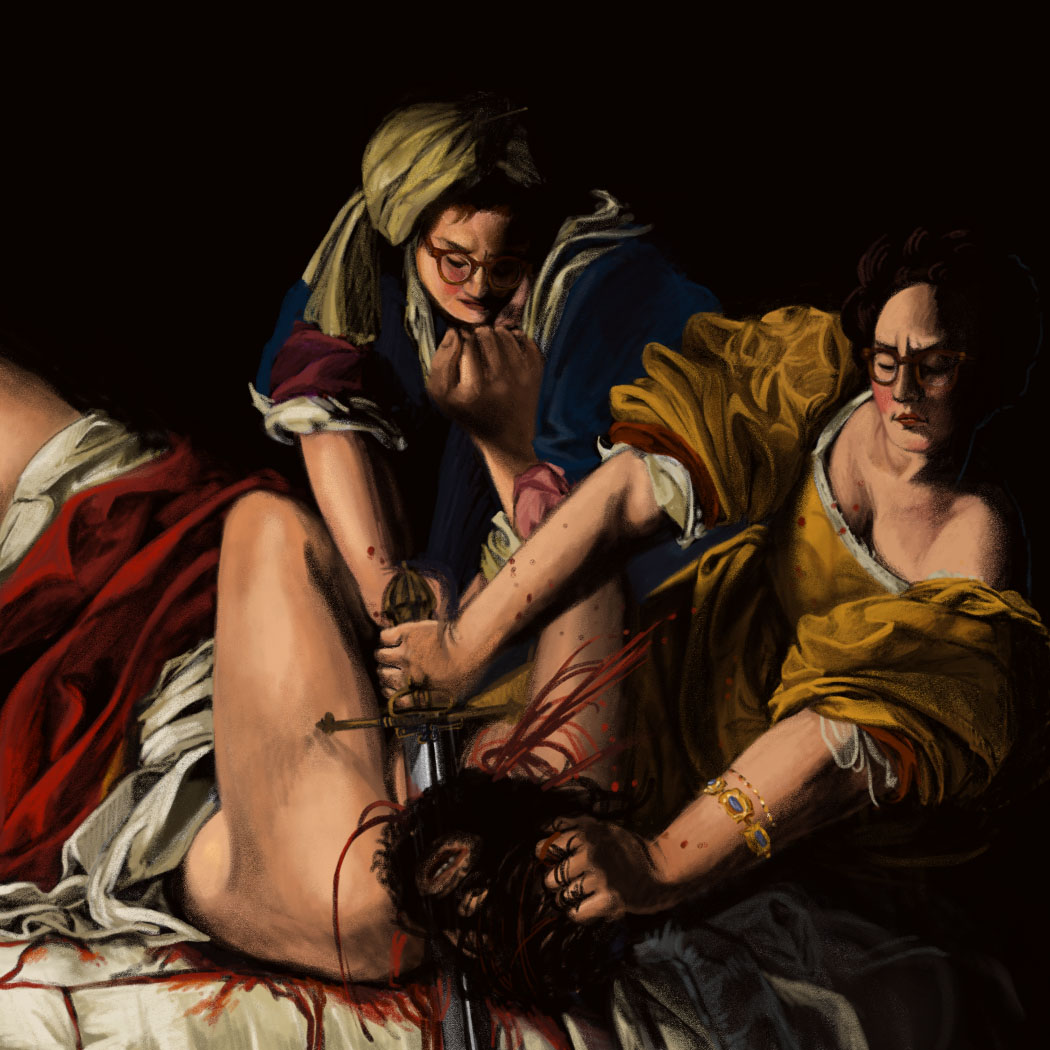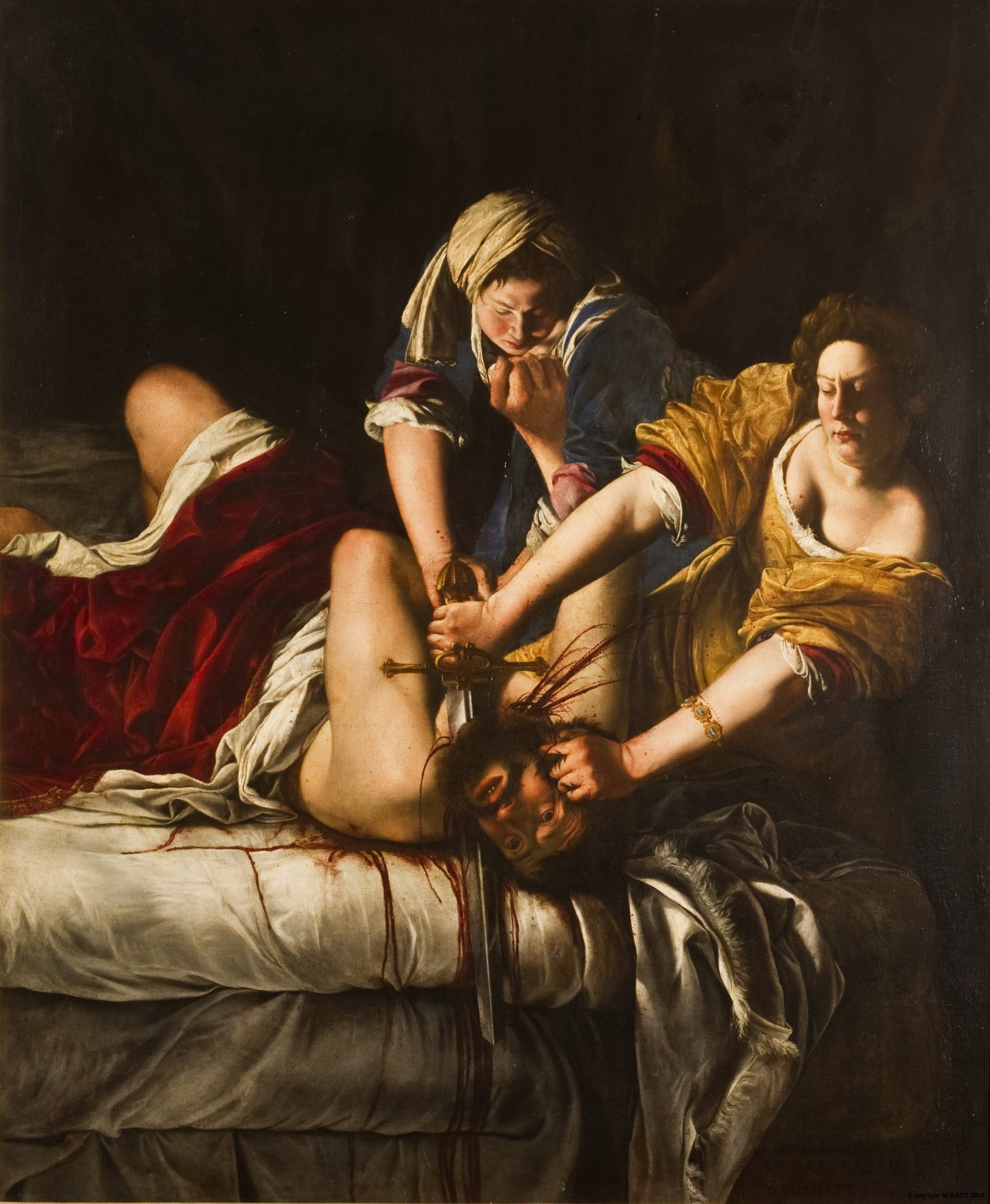56/100
Judith Slaying Holofernes
-
Artist
Artemisia Gentileschi
-
Year
1614-1621
-
Culture
Italian
-
Date of Copy
This entry came out of the same energy as the previous one. The Brett Kavanaugh hearings were on, when he was up for Supreme Court nomination in 2018 and accused of sexual assault. The #MeToo movement was in full swing. And I was angry.
This was another cathartic entry, for a painting that has become quite iconic. It's by Artemisia Gentileschi, a baroque painter with great talent. She's also well-known for taking her rapist to court and winning. Though that trial shadowed her reputation for a while, she went on to have a long and successful artistic career.
You can understand why Artemisia would be angry, and why this painting might have come out like this. When I was copying it, even I was a bit shocked by the violence of the blood spurting out. It depicts Judith slaying Holofernes, a common painting subject that I write a bit more about in entry 23. Judith was a beautiful widow whose home city was being invaded by the Assyrian general Holofernes. She gained access to his teent due to his desire for her. When he was passed out drunk, she beheaded him with his own sword. Unlike a lot of Judith/Holofernes paintings, this one is definitely less about the beauty of Judith and more about the act of beheading itself. Its boldness and power still feels explosive hundreds of years later.
There are several versions of this painting. This particular one is in the Uffizi. There is also an earlier version in the Museo Capodimonte in Naples.
Reference image from Wikipedia. The painting is now in the Uffizi in Florence.

